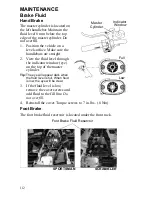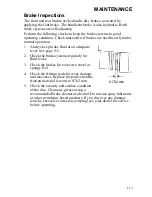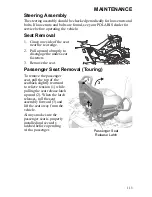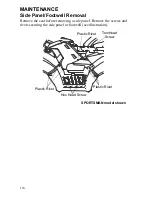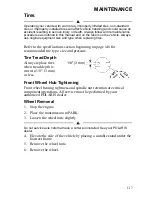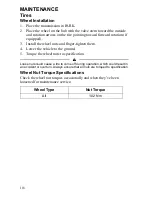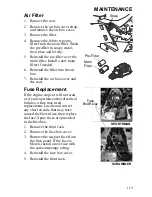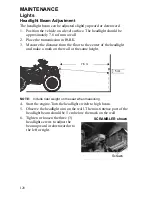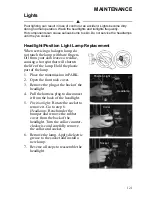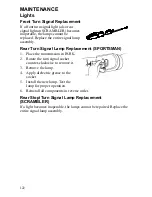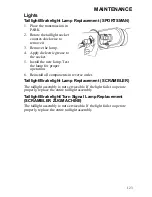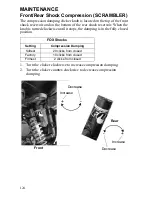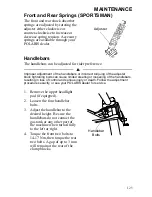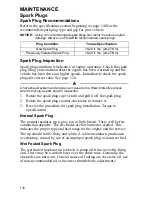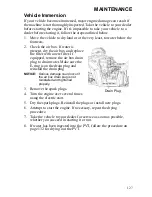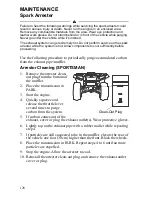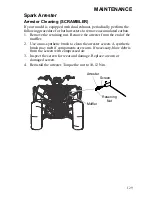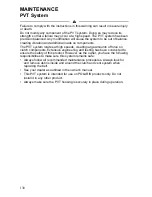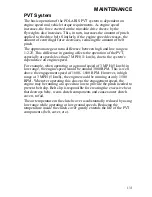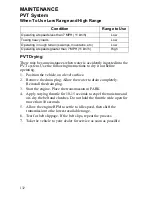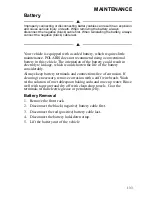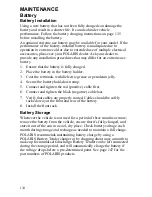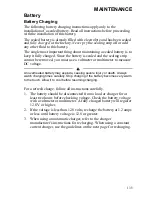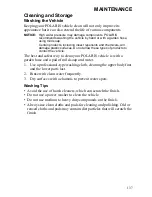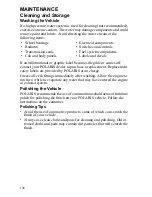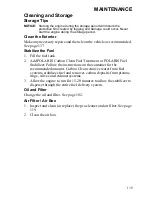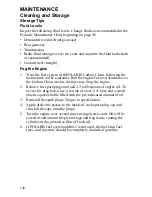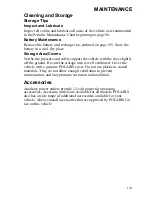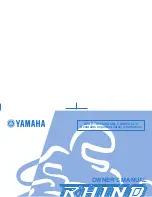
126
MAINTENANCE
Spark Plugs
Spark Plug Recommendations
Refer to the specifications section beginning on page 148 for the
recommended spark plug type and gap for your vehicle.
NOTICE:
Using non-recommended spark plugs can result in serious engine
damage. Always use POLARIS-recommended spark plugs.
Spark Plug Inspection
Spark plug condition is indicative of engine operation. Check the spark
plug firing end condition after the engine has been warmed up and the
vehicle has been driven at higher speeds. Immediately check the spark
plugs for correct color. See page 126.
A hot exhaust system and engine can cause burns. Wear protective gloves
when removing a spark plug for inspection.
1. Rotate the spark plug cap 1/4 turn and pull it off the spark plug.
2. Rotate the spark plug counter-clockwise to remove it.
3. Reverse the procedure for spark plug installation. Torque to
specification.
Normal Spark Plug
The normal insulator tip is gray, tan or light brown. There will be few
combustion deposits. The electrodes are not burned or eroded. This
indicates the proper type and heat range for the engine and the service.
The tip should not be flaky and white. A white insulator tip indicates
overheating, caused by use of an improper spark plug or incorrect fuel.
Wet Fouled Spark Plug
The wet fouled insulator tip is black. A damp oil film covers the firing
end. There may be a carbon layer over the entire nose. Generally, the
electrodes are not worn. General causes of fouling are excessive oil, use
of non-recommended oil or incorrect throttle body adjustments.
Plug Condition
Torque Specification
New Spark Plug
18-20 ft. lbs. (24-27 Nm)
Previously Installed Spark Plug
18-20 ft. lbs. (24-27 Nm)

